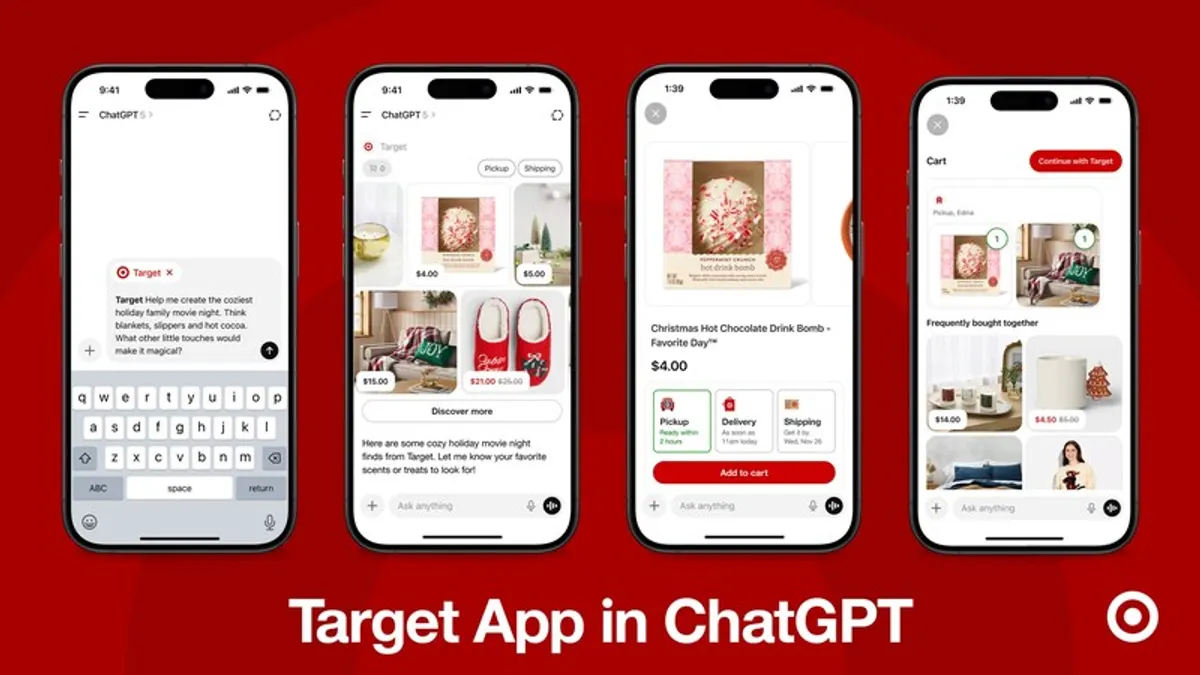The mobile gaming market is about to get more crowded this year as Facebook, Google, Snap and Apple expand or introduce video game strategies, potentially boosting the reach of popular games and opening up new engagement opportunities for marketers, including real-world activations through augmented reality (AR).
Brands are plowing more ad dollars into mobile games to reach younger audiences who have mostly shunned traditional media like TV and print. At the same, app developers are looking for more ways to monetize their gaming content in a fiercely competitive market.
Those twin dynamics are driving double-digit growth for in-game ad spending and are bringing ad-dependent companies like Facebook, Google and Snap into the gaming market in bigger ways. So far this year, Facebook introduced a new gaming tab for streaming content and casual gamers, Snapchat launched a multiplayer gaming platform and Google introduced Stadia, a cloud-based gaming platform. All are likely to look for ways to monetize their strategies with sponsorships, given their experience with delivering target audiences to advertisers.
"Gaming is more active than browsing social media, so if anything, this is an opportunity for advertisers," Tom Wijman, senior market analyst at researcher Newzoo, said in an email to Mobile Marketer.
Meanwhile, Apple will depend on subscription revenue for its gaming service, Arcade, which will charge a flat fee for access to more than 100 exclusive video games without ads, ad tracking or additional purchases. Privacy-focused Apple concentrates more on selling hardware and services to consumers rather than monetizing user data with advertising. Still, given Apple's wide reach, savvy marketers will be looking for a way in. One possibility could be branded games. NBCUniversal, for example, recently launched a game app offering interactive adventures based on some of its most popular shows.
Flipping channels
Each of the major mobile tech companies launching gaming platforms is also making big bets on AR. It's not a stretch to imagine that games on these platforms are likely to have a heavy dose of immersive features that urge people to explore their surroundings. Such gameplay can give advertisers more opportunities to insert location-based engagements that ask players to visit a nearby store or restaurant to receive special offers or discounts.
"Game developers are incredibly smart and sophisticated when it comes to data and understanding who their user base is, and they will likely play a critical role in helping the ecosystem become less reliant on the walled gardens."

Maggie Mesa
VP of business development, OpenX
Pokémon Go, the hit game from Niantic that helped to popularize mobile AR in 2016, was only the first step in this evolution. Pokémon last week released an AR mobile app called Pokémon Pass that urges users to visit select Target stores to collect in-game rewards.
"Keep an eye out for AR gaming on maps — there are very few companies competing in this space today and not much infrastructure for advertisers to get engaged — but there are a lot of opportunities to develop new advertising models," Jhanvi Shriram, co-founder and CEO of AR gaming app Krikey, said in an email.
Game developers could also help advertisers expand the reach of their efforts.
"Advertisers love the people-based marketing solutions of the walled gardens like Facebook, but they are increasingly looking for ways to expand their campaigns outside the walled gardens for more scale," Maggie Mesa, VP of business development at ad exchange OpenX and Mobile Marketing Association board member, said in an email. "Game developers are incredibly smart and sophisticated when it comes to data and understanding who their user base is, and they will likely play a critical role in helping the ecosystem become less reliant on the walled gardens."
A safe environment
A push into gaming by the major mobile platforms could help them keep advertisers happy by delivering the highly desirable audience of gamers at a time when brands are more closely scrutinizing their digital ad buys because of concerns over brand safety, transparency and privacy.
"Mobile games have some significant advantages for advertisers including the fact that they offer professionally produced content with highly integrated brand placements as compared to other platforms that rely more heavily on user generated content."

Bryan Buskas
COO, AppOnboard
A focus on games could help social media platforms like Facebook and Snapchat address marketers' worries about brand safety. Advertisers have boycotted YouTube on several occasions because their video spots appeared among offensive content while some liquor brands previously boycotted Snapchat because of concerns related to its underage audience.
Because gaming content is controlled by the app developer, it's typically less susceptible than user-generated content to straying into broadly objectionable territory. So it's no surprise that gaming apps rank higher than social media platforms in providing a brand-safe environment for advertisers, a survey of global consumers by AdColony found. More than half (60%) of respondents said they see offensive content on Facebook, compared with 31% on YouTube and 18% on mobile games.
"Mobile games have some significant advantages for advertisers including the fact that they offer professionally produced content with highly integrated brand placements as compared to other platforms that rely more heavily on user generated content," Bryan Buskas, COO of app design and development platform AppOnboard, said via email.
Still, advertisers need to consider whether a mobile game's content lines up with how they want their brands to be perceived.
"The biggest risk to brand safety, as opposed to fraud, ultimately depends on the content of the game," Shani Rosenfelder, head of content and mobile insights at analytics firm AppsFlyer, said in an email. "Is there violence, or strong and suggestive language? Advertisers must make sure that they’re placing ads on games that are legitimate, relevant and appropriate."
Spending grows
The interest in gaming from major mobile tech companies comes as the mobile gaming market continues to evolve. U.S. spending on in-game ads will grow 16% to $3.25 billion this year from $2.8 billion in 2018, eMarketer forecasts. That figure mostly consists of mobile gaming because console game platforms — such as Sony PlayStation and Microsoft Xbox — typically aren't ad-supported even though they provide access to online TV, the internet, shopping and social networks.
"Mobile gaming has some of the biggest potential reach of all forms of entertainment," Newzoo's Wijman said. "People spend multiple hours per day looking at their smartphone."
Newzoo estimates that 2.4 billion people worldwide will play mobile games this year, a massive audience that rivals the reach of social media apps including messaging. Smartphones have expanded the audience for video games beyond the stereotypical fan base of geeky teenage boys.
Seventy-two percent of women play games on their smartphones, the same proportion as men, according to GlobalWebIndex. Eighty-four percent of women 16-24 and 81% of women 25-34 said they play mobile games.
Rewarded video
In recent years, worries about ad intrusiveness led many game developers to focus on other revenue streams, such as in-app purchases (IAPs) that let players advance more quickly through a game.
For example, "Fortnite," the hit battle royale game from Epic Games, lets players buy in-game currency called "V bucks" that can be used to obtain cosmetic skins, dances and pre-released game modes for characters. Epic racked up $2.4 billion from in-game purchases last year, demonstrating how lucrative they can be.
While game developers aspire to have a hit like "Fortnite," they're weaning themselves off IAP revenue as in-game advertising swells amid growing industry acceptance of paid announcements, according to DeltaDNA. The industry's percentage of revenue from ads rose 11% and reversed a three-year decline, the firm said.
In-game mobile ads come in a variety of formats, including playable, interstitial, native and offerwalls. With the growth of digital video overall, ad formats like rewarded video are helping drive in-game ad sales. Given the strong interest in video exhibited by Google, Apple, Facebook and Snapchat, it's easy to imagine that they're looking for ways to fuse their gaming, advertising and video strategies.
Rewarded video, or opt-in video, ads give gamers incentives to watch a video by offering points or other valuable gaming content like levels, lives or virtual gear. The format produces the highest click-through rates among video ad formats, according to research from mobile ad platform Smaato, and is offered by 65% of mobile game developers, DeltaDNA found.
"Today, we're seeing large brand advertisers enter the opt-in video space, and it's also expanding to non-gaming apps," OpenX's Mesa said.




















